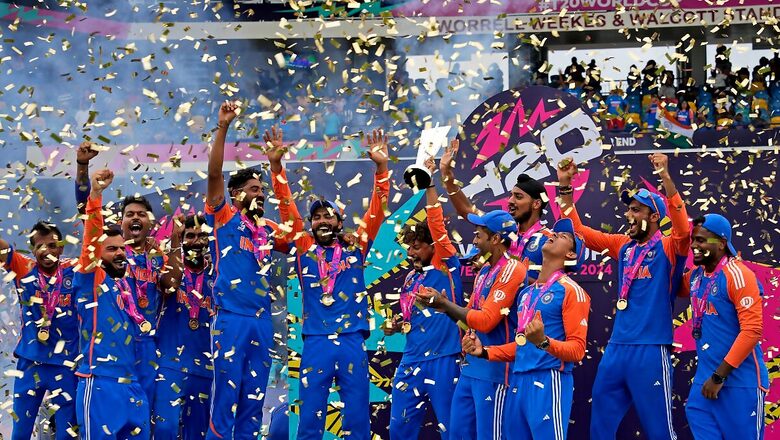
views
During the Howdy Modi event in Houston in 2020, the then US President Donald Trump was ecstatic to learn that the National Basketball Association (NBA) was playing its maiden games in Mumbai that October. “Wow, sounds good,” he remarked, clearly pleased about the American sport reaching Indian shores. “Next week, thousands of people will gather in Mumbai to watch the first-ever NBA basketball game in India. Am I invited, prime minister? I may come, be careful, I may come.” This comment drew smiles and underscored the unique power of sports in bringing countries together.
The use of sports as a diplomatic tool is not a new concept to us. One of the most notable instances was during Atal Bihari Vajpayee’s tenure as prime minister, when India’s relations with Pakistan were at an all-time low. Vajpayee astutely utilised sports to bridge the divide and foster a sense of patriotism.
Sports have demonstrably positive impacts on both physical and mental well-being. Engaging in sports can instill values of respect, unity, and collaboration. Studies indicate that sports can help mitigate conflicts fuelled by violent extremism and foster positive attitudinal shifts among participants. Furthermore, sports participation has been linked to reduced stress and improved mental health, as well as enhanced communication and coordination skills, especially among young people. Therefore, sporting activities, regardless of their scale, can serve as a universal means for fostering friendships. The recently concluded World T20 Cricket Championship provided evidence of this.
This year’s T20 World Cup was a landmark event, featuring a record-breaking 20 teams competing across the United States and the West Indies. The four-week tournament, encompassing 55 matches, marked the first time the US hosted the T20 World Cup, underscoring cricket’s growing popularity in North America. Afghanistan’s participation, despite being under Taliban rule, and their impressive performance added another layer of complexity to the event. Furthermore, the diverse range of countries—Namibia, Nepal, Netherlands, Papua New Guinea, Scotland, Uganda, and Oman—participating in the event showcased the truly global appeal of this exciting sport.
This year’s tournament showcased a strong connection between cricket and the global diaspora. Notably, the top wicket-taker for the United States team was an Indian immigrant, underscoring the growing influence of diasporic communities within the sport. This connection was further evident in the significant turnout of diverse fans eager to support their respective nations, suggesting that cricket’s popularity, especially its shorter formats, is beginning to rival even football in some regions.
While football’s global reach has historically outpaced cricket, which was largely confined to former British colonies, the sport is now captivating new audiences worldwide. As emerging cricketing nations continue to join the ranks and demonstrate their prowess on the international stage, cricket’s appeal is poised to grow even stronger among future generations. The impressive crowd turnouts in cities like New York, Dallas, and Fort Lauderdale are a testament to this burgeoning enthusiasm.
Jay Shah, in his role as President of the Asian Cricket Council, has made sure that Asian countries have proper representation in the sport. Despite the fact that Afghanistan has not been officially recognised as a country under Taliban rule, Jay Shah has managed to facilitate their participation in matches held in the United States. The BCCI has played a significant role in shaping the Afghan Cricket Board, employing non-traditional diplomatic approaches that are now benefiting the Afghan citizens.
Since 2015, India has consistently supported the Afghan cricket team, ensuring the proud display of the Afghan flag in international cricket. This unwavering support has provided the Afghan people with a source of unity and national pride.
It is a source of immense pride that the 13-year drought in Indian cricket has finally come to an end, resulting in us bringing home the T20 World Cup. Even more rewarding is the role India has played in internationalising the sport. The popularity of this sport in various countries will not only enhance India’s reputation but also highlight its rich cricketing heritage.
While cricket is gaining momentum in the United States and the Caribbean, European countries are preparing for the 2026 qualifiers. Italy is set to host these qualifiers, with countries like Austria, France, Hungary, the Isle of Man, Israel, Luxembourg, Portugal, Romania, and Turkey participating. European nations are now beginning to show interest in cricket, moving away from their traditional love for football. Further highlighting cricket’s expanding reach, the Holy See recently sent its cricket team to England, promoting values of brotherhood, inclusivity, and unity. This gesture from Europe’s largest religion indicates the growing popularity of cricket.
As cricket’s global footprint expands, India has a prime opportunity to leverage the sport more effectively as a tool for diplomacy. Let the vision of a developed India by 2047 include a strategic cricketing vision, positioning the nation as a key driver of the sport’s global growth.
Adarsh Kuniyillam is a Parliamentary and Policy Analyst and has the experience of working under various Members of Parliament. Views expressed in the above piece are personal and solely those of the author. They do not necessarily reflect News18’s views.














Comments
0 comment